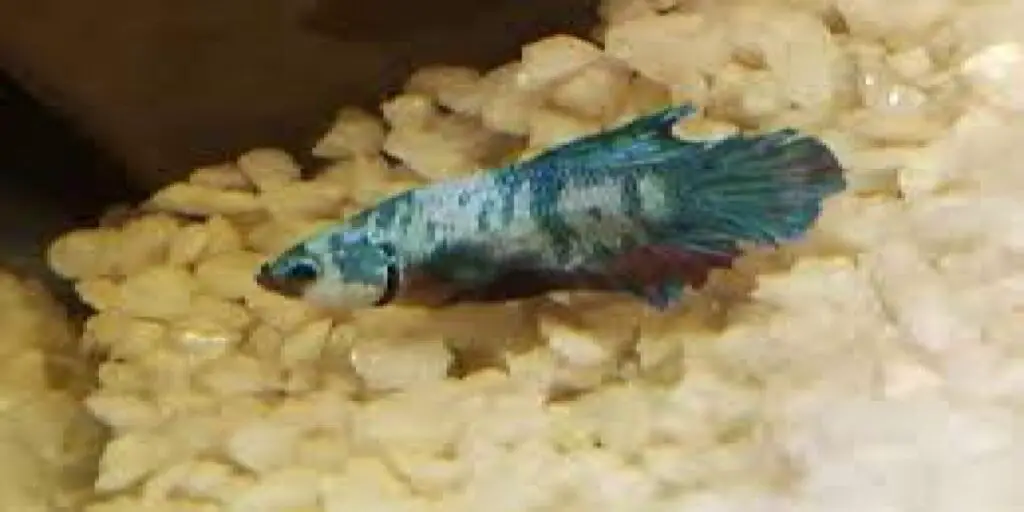Discover why your fish gasping at the tank bottom. Learn causes and solutions for a healthier aquarium.

Here are some steps to address water quality issues:
- Test Your Water: Invest in a reliable water testing kit that measures ammonia, nitrite, nitrate, pH, and other key parameters. Regularly monitor these levels to ensure they stay within the appropriate range for your fish.
- Perform Water Changes: If you detect high levels of ammonia, nitrite, or nitrate, perform a partial water change immediately. This will dilute the harmful substances and improve water quality. Use a water conditioner to remove chlorine and chloramine from tap water before adding it to the tank.
- Maintain Your Filter: Your aquarium filter plays a crucial role in removing waste and maintaining water quality. Clean or replace filter media as recommended by the manufacturer. A dirty filter can contribute to poor water quality.
- Avoid Overfeeding: Overfeeding leads to excess waste in the tank, which can contribute to water quality issues. Feed your fish an amount they can consume in a few minutes, and remove any uneaten food to prevent it from decaying in the tank.
- Cycle Your Tank: Ensure your aquarium has gone through the nitrogen cycle before adding fish. Cycling establishes beneficial bacteria that convert ammonia into less harmful nitrite and nitrate. Without a cycled tank, ammonia levels can spike and harm your fish.
Gill Disease
Gill disease is another potential culprit when your fish are gasping for air at the bottom of the tank. Gill problems can be caused by various factors, including bacterial or parasitic infections, exposure to chemicals, or poor water conditions. Signs of gill disease often include labored breathing, reddened or swollen gills, and increased gill mucus production.
To address gill disease:
- Isolate Affected Fish: If you suspect gill disease, isolate the affected fish in a separate quarantine tank to prevent the potential spread of the disease to other fish.
- Consult a Veterinarian: If the condition persists or worsens, consider consulting a veterinarian with expertise in fish health for proper diagnosis and treatment recommendations.
- Improve Water Quality: Ensure optimal water quality in the quarantine tank. Maintain excellent filtration, perform regular water changes, and closely monitor water parameters.
- Medication: Depending on the diagnosis, your vet may prescribe specific medications to treat the gill disease. Follow their instructions carefully.
Parasites, Bacterial Infections, and Fungal Infections
Fish are susceptible to various parasites, bacterial infections, and fungal infections, all of which can lead to respiratory distress and cause fish to gasp for air. Common symptoms include visible lesions, frayed fins, abnormal behavior, and rapid gill movement.
To address these issues:
- Quarantine and Observe: Isolate affected fish in a quarantine tank to prevent disease spread. Observe their behavior and appearance closely.
- Identify the Problem: Consult fish disease resources or a veterinarian to identify the specific parasite, bacteria, or fungus causing the issue. Treatment varies based on the diagnosis.
- Medication: Depending on the diagnosis, you may need to treat with anti-parasitic, antibiotic, or antifungal medications. Follow the recommended treatment regimen diligently.
Water Temperature
Inconsistent or extreme water temperatures can stress fish and affect their ability to breathe properly. Sudden drops in temperature, in particular, can lead to shock and respiratory distress.
To prevent temperature-related issues:
- Use a Heater: Install a reliable aquarium heater to maintain a stable water temperature within the ideal range for your fish species.
- Avoid Drastic Changes: Gradually acclimate new fish to your tank’s temperature if they come from a different environment. Also, avoid placing the aquarium in drafty areas or near heating or cooling vents.
Overfeeding and Overcrowding
Overfeeding and overcrowding contribute to poor water quality, which can lead to fish gasping for air. Overcrowding restricts oxygen availability, and excess food leads to waste buildup.
To address these common mistakes:
- Feed Sparingly: Offer only the amount of food your fish can consume within a few minutes. Remove any uneaten food promptly.
- Monitor Fish Population: Ensure your tank is not overstocked. Research the specific requirements of your fish species and provide adequate space for them to thrive.
- Practice Responsible Fishkeeping: Regularly maintain your tank, clean substrate, and perform water changes to keep conditions optimal for your fish.
You May Also Like:
- Fish Gasping For Air After Water Change (Causes & Signs)
- Why Are My Fish Gasping After A Water Change
- Do Water Changes Affect Fish Growth? (Top 5 Reasons)
Conclusion
Seeing your fish gasping for air at the bottom of the tank can be distressing, but understanding the potential causes and taking appropriate action can save your fish’s life. Remember the following key points:
- Low oxygen levels: Maintain proper aeration, reduce overcrowding, and avoid overfeeding.
- Water quality problems: Test your water, perform regular water changes, and maintain your filter.
- Gill disease: Isolate affected fish, consult a vet if needed, and maintain pristine water quality.
- Parasites, bacterial infections, and fungal infections: Quarantine, identify the problem, and treat accordingly.
- Water temperature: Keep water temperature stable within the recommended range.
- Overfeeding and overcrowding: Feed responsibly and ensure your tank is not overstocked.
By staying vigilant and addressing issues promptly, you can create a healthy and thriving environment for your beloved aquatic companions. Always remember that responsible fishkeeping is essential for the well-being of your fish.